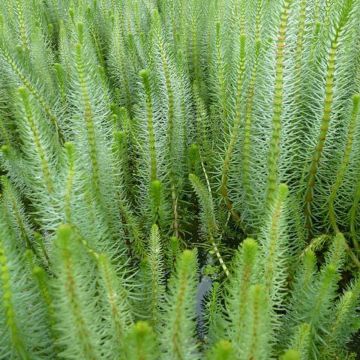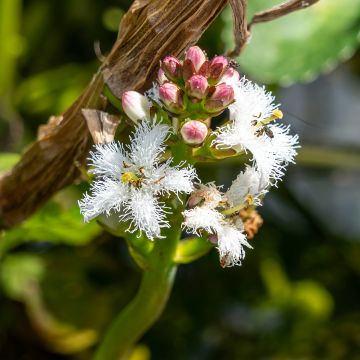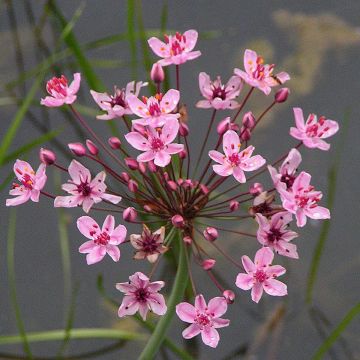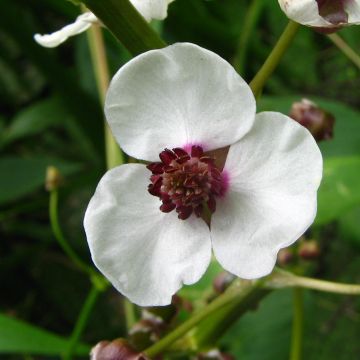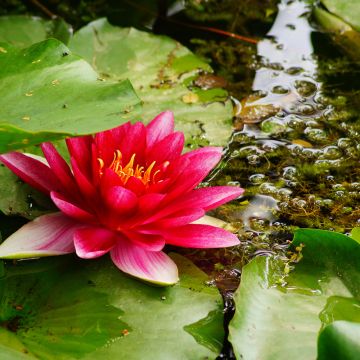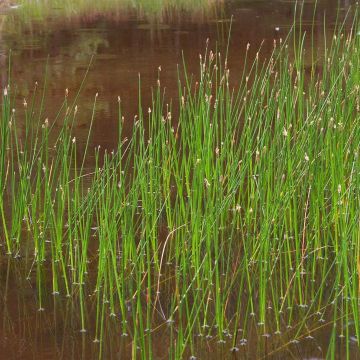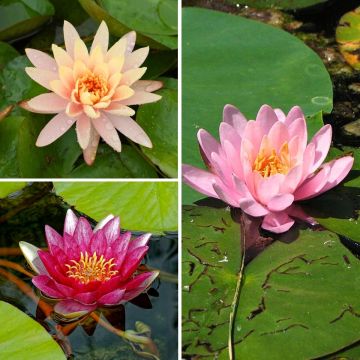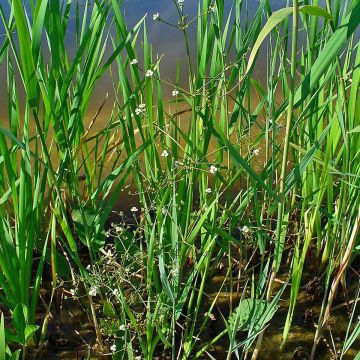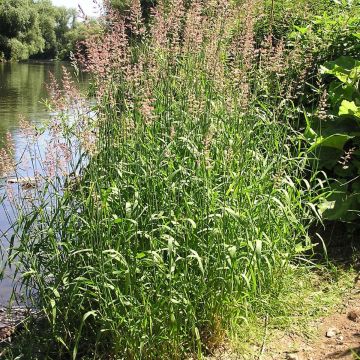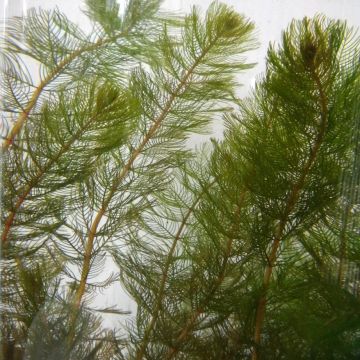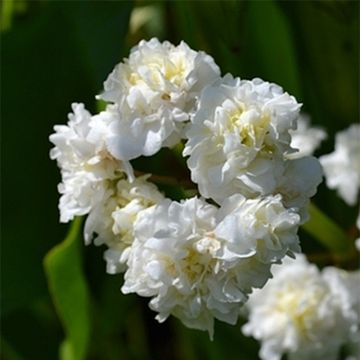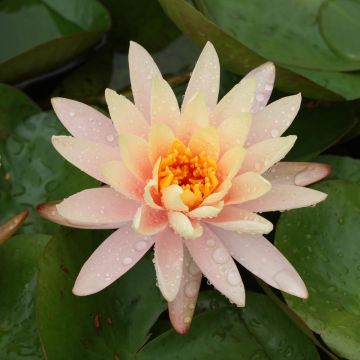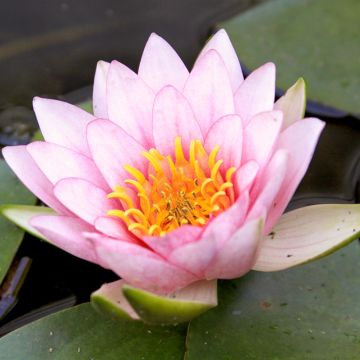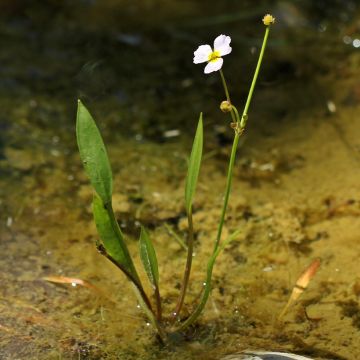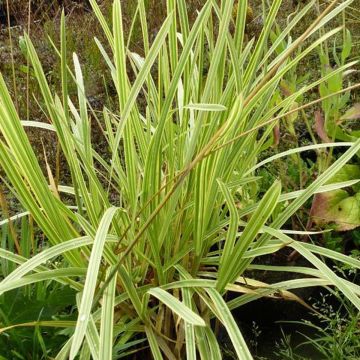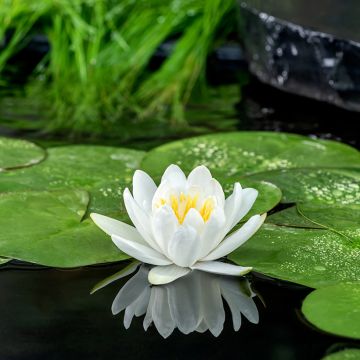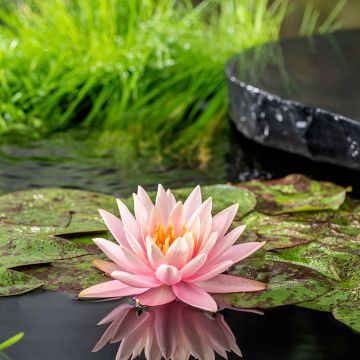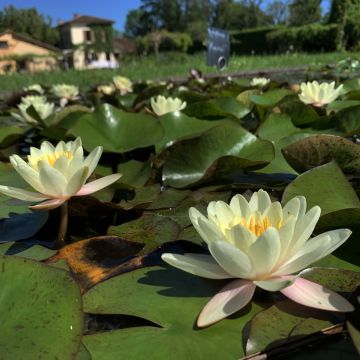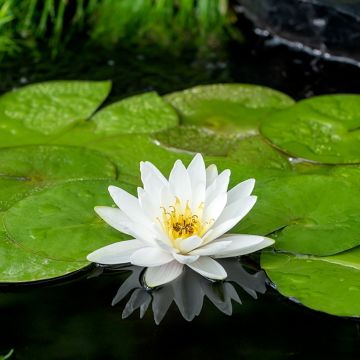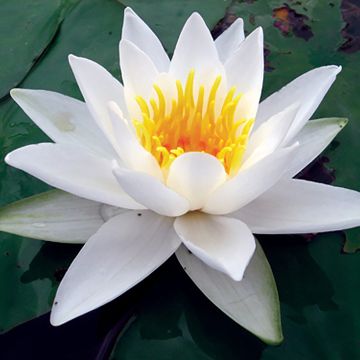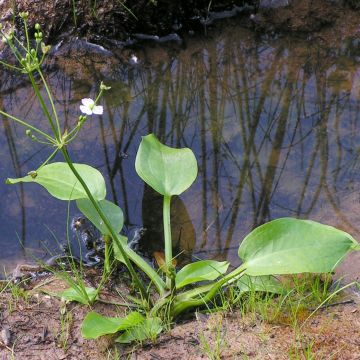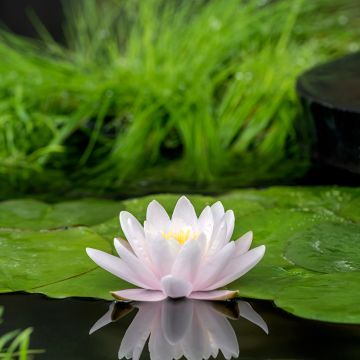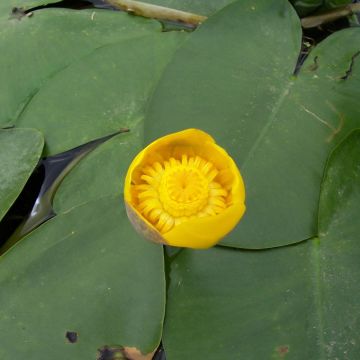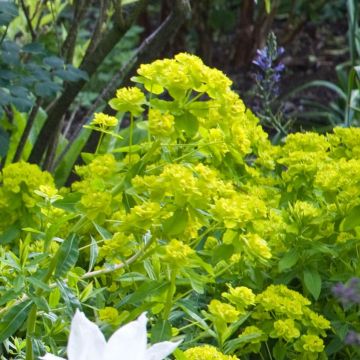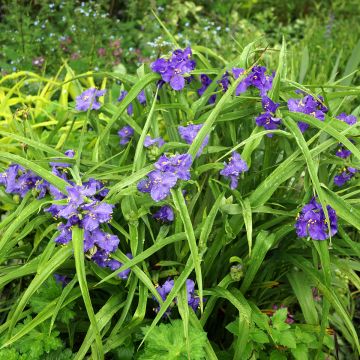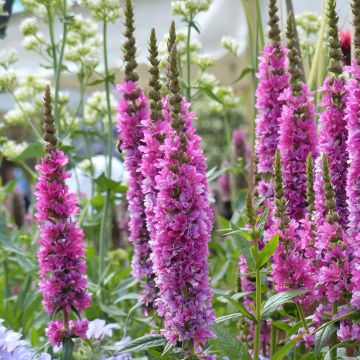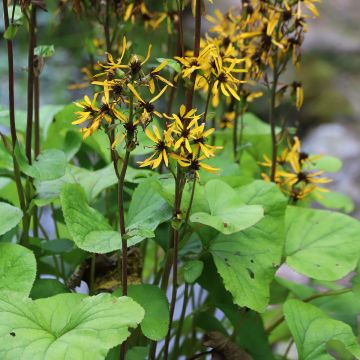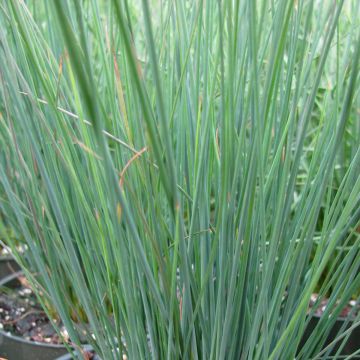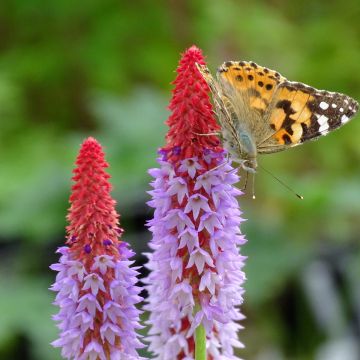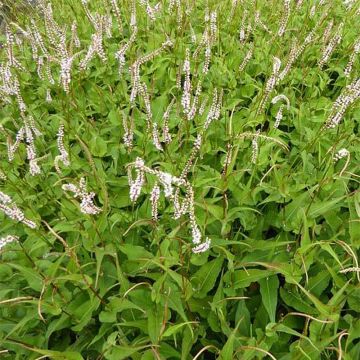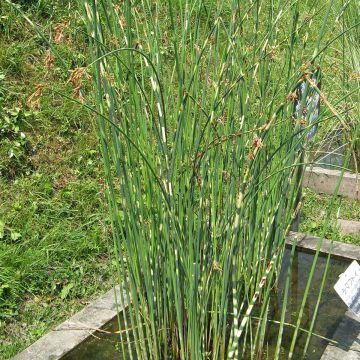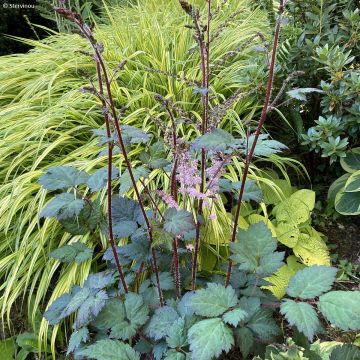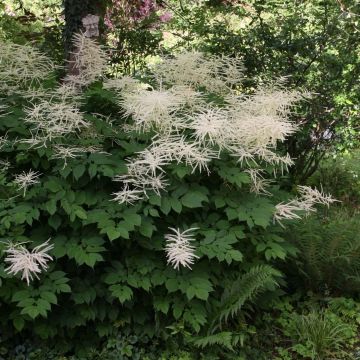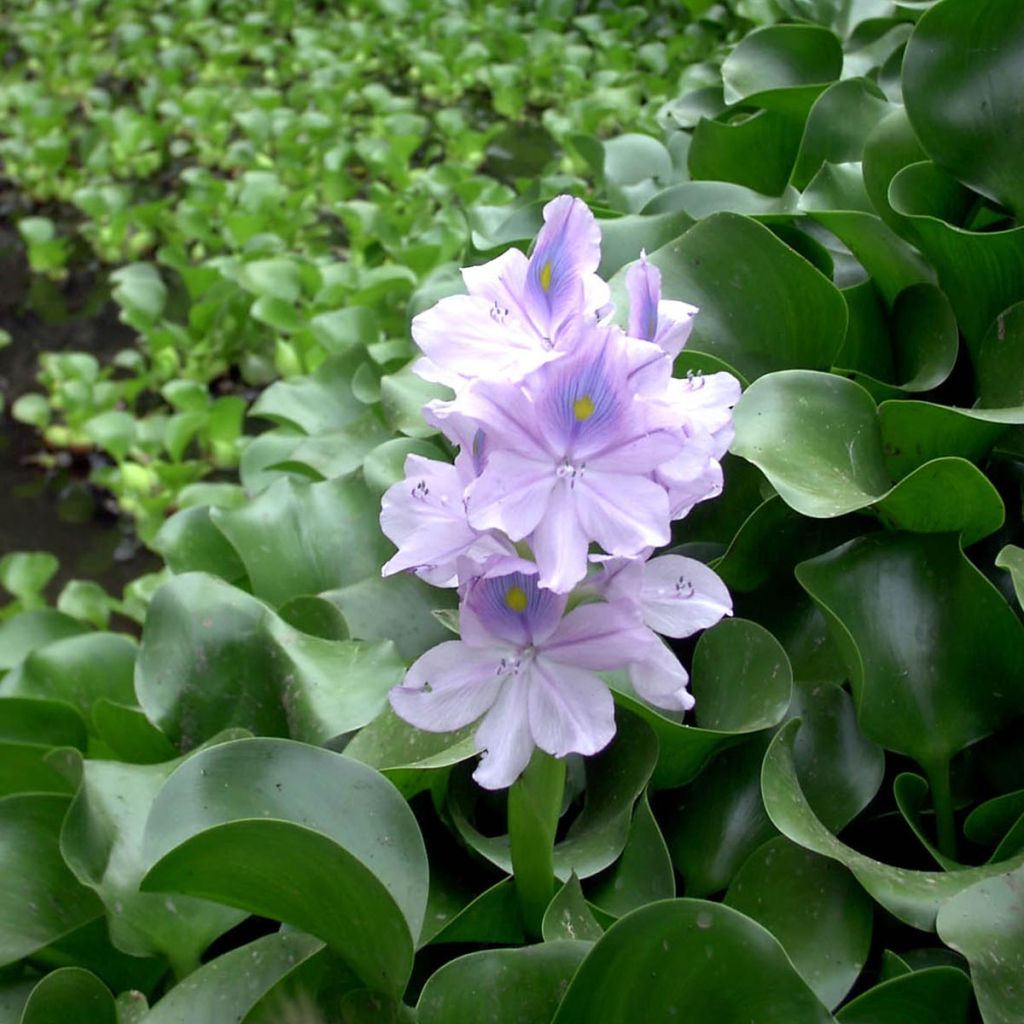

Eichhornia crassipes
Eichhornia crassipes
Eichhorna crassipes
Water hyacinth, Jamaica water plantain, Sky-blue pickerel weed, Water orchid
Hello, I don't understand this controversy about this so-called invasive young plant since it cannot withstand frost and will therefore be destroyed the following winter. There are some unbearable global decisions that deprive us of beautiful specimens which, in my region of the Centre-Val de Loire, do not pose any problems. Especially since I spotted some at the garden centre this year.
Patrick, 30/04/2021
Why not try an alternative variety in stock?
View all →This plant carries a 12 months recovery warranty
More information
We guarantee the quality of our plants for a full growing cycle, and will replace at our expense any plant that fails to recover under normal climatic and planting conditions.
From €5.90 for pickup delivery and €6.90 for home delivery
Express home delivery from €8.90.

Does this plant fit my garden?
Set up your Plantfit profile →
Description
IMPORTANT: in order to preserve our natural ecosystems and in accordance with European Regulation No. 1143/2014 on the prevention and management of the introduction and spread of invasive alien species, we have removed this plant from our catalogue. Therefore, it is no longer available for sale.
Eichhornia crassipes, also known as water hyacinth, is a non-hardy aquatic perennial with glossy green rounded leaves arranged in rosettes. It blooms in summer with pretty pale-violet flowers marked with light blue and gold. The flowers are borne on upright terminal spikes. It floats on water without the need to root. It should be used in closed ponds only.
Eichhornia crassipes belongs to the Pontederiaceae family. It is native to South America, specifically the Amazon basin. It does not tolerate frost. The plant has a rosette habit, reaching a height of 45cm (18in) when flowering with a minimum spread of 45cm (18in). A colony of interconnected plants can quickly cover a large water surface. Water hyacinth, which is not related to the true hyacinth family, is an aquatic perennial with thick, waxy, rounded and glossy leaves held above the water surface on stems. The leaves are roughly ovate to circular, 10 to 20cm (4 to 8in) in diameter, with undulate edges. The leaf veins are dense, numerous, almond-shaped, and longitudinal. Water hyacinth grows from a bulbous and spongy rootstock rhizome measuring up to 6cm (2in) in diameter and 30cm (12in) in length. The roots are dark purple and feathery, measuring up to 300cm (118in) and constituting over 50% of the standing crop biomass of a water hyacinth population. The growth of this plant is one of the - if not the - fastest in the plant kingdom: water hyacinths can grow from 2 to 5m (7 to 16ft) per day in some Southeast Asian sites.
Set water hyacinth on calm water at 13 to 16°C (55.4 to 60.8°F). Overwinter under shelter at a minimum of 15°C (59°F), in full light, in tanks filled with water and sand. Cultivating in a garden pond requires plenty of light, nutrient-rich medium, slightly acidic freshwater, and a humidity-saturated atmosphere. The annual temperatures range from 21 to 28°C (69.8 to 82.4°F) (average of 5 cases = 24.9°C (76.82°F)), and its pH tolerance is estimated at 5.0 to 7.5. Water hyacinth does not tolerate water temperatures above 34°C (93.2°F). The leaves are killed by freezing temperatures and saltwater. In brackish water, the leaves show chlorosis and eventually die. It should be reserved for large ponds, particularly garden ponds containing burrowing fish. The interwoven roots seen from below can have a decorative effect and provide refuge for fry. Lightly submerged roots are suitable for spawning and fry development as well as plankton cultivation.
The epithet "crassipes" of water hyacinth indicates "thick-footed" in reference to the swollen base of the petiole. It is one of the most dynamic known plants, reproducing mainly vegetatively through stolons, which eventually form daughter plants. Vegetative multiplication is very active under favourable conditions. Each plant can produce thousands of seeds every year, and these seeds can remain viable for over 28 years (recorded). Common water hyacinths (Eichhornia crassipes) are vigorous producers known to double their population in two weeks!
Report an error about the product description
Flowering
Foliage
Plant habit
Botanical data
Eichhorna
crassipes
Pontederiaceae
Water hyacinth, Jamaica water plantain, Sky-blue pickerel weed, Water orchid
South America
Other Aquatic perennials
Planting and care
Plant in calm water at 13 to 16°C (55.4 to 60.8°F). Overwinter under shelter at a minimum of 15°C (59°F), in full light, in containers filled with water and sand. Garden pond cultivation requires plenty of light, nutrient-rich medium, soft water slightly acidic, with a humid atmosphere. The annual temperatures range from 21 to 28°C (69.8 to 82.4°F) (average of 5 cases = 24.9°C (76.82°F)), and its pH tolerance is estimated at 5.0 to 7.5. Water hyacinth does not tolerate water temperatures above 34°C (93.2°F). The leaves are killed by freezing temperatures and saltwater. In brackish water, the leaves show chlorosis and eventually die.
Planting period
Intended location
Care
-
, onOrder confirmed
Reply from on Promesse de fleurs
Aquatic plants
Haven't found what you were looking for?
Hardiness is the lowest winter temperature a plant can endure without suffering serious damage or even dying. However, hardiness is affected by location (a sheltered area, such as a patio), protection (winter cover) and soil type (hardiness is improved by well-drained soil).

Photo Sharing Terms & Conditions
In order to encourage gardeners to interact and share their experiences, Promesse de fleurs offers various media enabling content to be uploaded onto its Site - in particular via the ‘Photo sharing’ module.
The User agrees to refrain from:
- Posting any content that is illegal, prejudicial, insulting, racist, inciteful to hatred, revisionist, contrary to public decency, that infringes on privacy or on the privacy rights of third parties, in particular the publicity rights of persons and goods, intellectual property rights, or the right to privacy.
- Submitting content on behalf of a third party;
- Impersonate the identity of a third party and/or publish any personal information about a third party;
In general, the User undertakes to refrain from any unethical behaviour.
All Content (in particular text, comments, files, images, photos, videos, creative works, etc.), which may be subject to property or intellectual property rights, image or other private rights, shall remain the property of the User, subject to the limited rights granted by the terms of the licence granted by Promesse de fleurs as stated below. Users are at liberty to publish or not to publish such Content on the Site, notably via the ‘Photo Sharing’ facility, and accept that this Content shall be made public and freely accessible, notably on the Internet.
Users further acknowledge, undertake to have ,and guarantee that they hold all necessary rights and permissions to publish such material on the Site, in particular with regard to the legislation in force pertaining to any privacy, property, intellectual property, image, or contractual rights, or rights of any other nature. By publishing such Content on the Site, Users acknowledge accepting full liability as publishers of the Content within the meaning of the law, and grant Promesse de fleurs, free of charge, an inclusive, worldwide licence for the said Content for the entire duration of its publication, including all reproduction, representation, up/downloading, displaying, performing, transmission, and storage rights.
Users also grant permission for their name to be linked to the Content and accept that this link may not always be made available.
By engaging in posting material, Users consent to their Content becoming automatically accessible on the Internet, in particular on other sites and/or blogs and/or web pages of the Promesse de fleurs site, including in particular social pages and the Promesse de fleurs catalogue.
Users may secure the removal of entrusted content free of charge by issuing a simple request via our contact form.
The flowering period indicated on our website applies to countries and regions located in USDA zone 8 (France, the United Kingdom, Ireland, the Netherlands, etc.)
It will vary according to where you live:
- In zones 9 to 10 (Italy, Spain, Greece, etc.), flowering will occur about 2 to 4 weeks earlier.
- In zones 6 to 7 (Germany, Poland, Slovenia, and lower mountainous regions), flowering will be delayed by 2 to 3 weeks.
- In zone 5 (Central Europe, Scandinavia), blooming will be delayed by 3 to 5 weeks.
In temperate climates, pruning of spring-flowering shrubs (forsythia, spireas, etc.) should be done just after flowering.
Pruning of summer-flowering shrubs (Indian Lilac, Perovskia, etc.) can be done in winter or spring.
In cold regions as well as with frost-sensitive plants, avoid pruning too early when severe frosts may still occur.
The planting period indicated on our website applies to countries and regions located in USDA zone 8 (France, United Kingdom, Ireland, Netherlands).
It will vary according to where you live:
- In Mediterranean zones (Marseille, Madrid, Milan, etc.), autumn and winter are the best planting periods.
- In continental zones (Strasbourg, Munich, Vienna, etc.), delay planting by 2 to 3 weeks in spring and bring it forward by 2 to 4 weeks in autumn.
- In mountainous regions (the Alps, Pyrenees, Carpathians, etc.), it is best to plant in late spring (May-June) or late summer (August-September).
The harvesting period indicated on our website applies to countries and regions in USDA zone 8 (France, England, Ireland, the Netherlands).
In colder areas (Scandinavia, Poland, Austria...) fruit and vegetable harvests are likely to be delayed by 3-4 weeks.
In warmer areas (Italy, Spain, Greece, etc.), harvesting will probably take place earlier, depending on weather conditions.
The sowing periods indicated on our website apply to countries and regions within USDA Zone 8 (France, UK, Ireland, Netherlands).
In colder areas (Scandinavia, Poland, Austria...), delay any outdoor sowing by 3-4 weeks, or sow under glass.
In warmer climes (Italy, Spain, Greece, etc.), bring outdoor sowing forward by a few weeks.

































